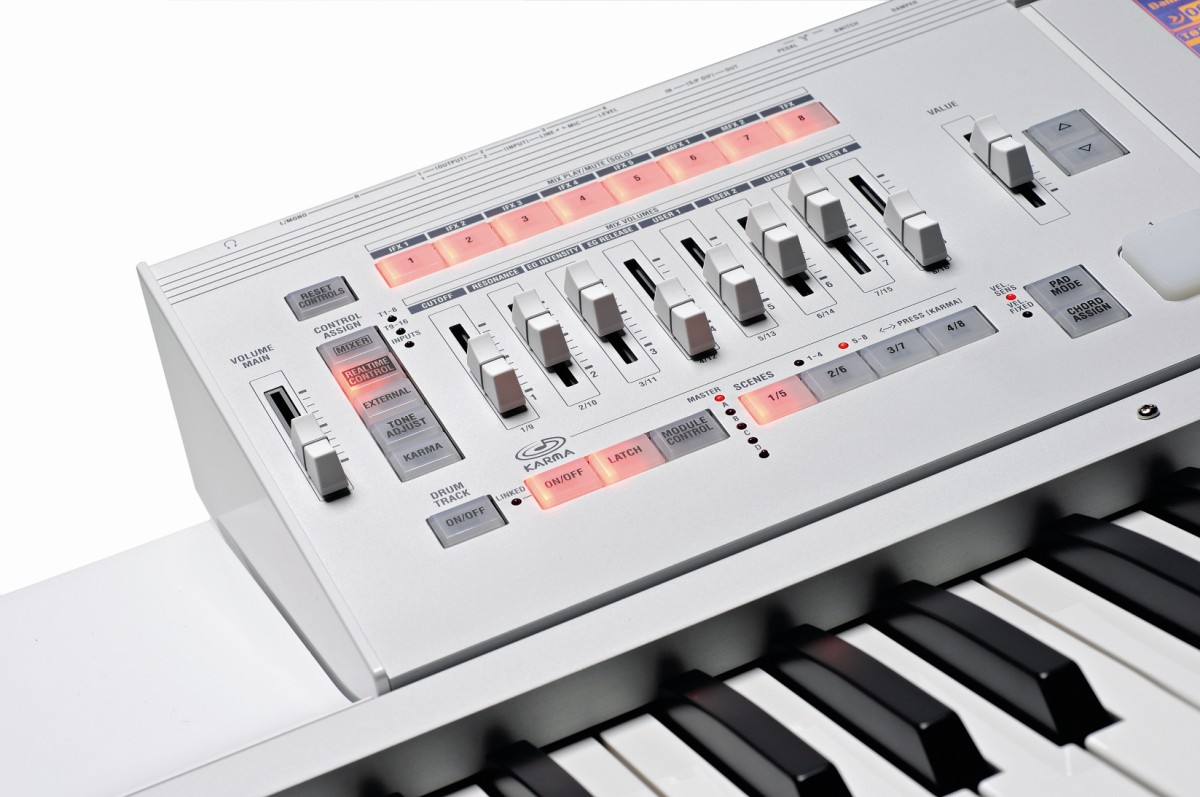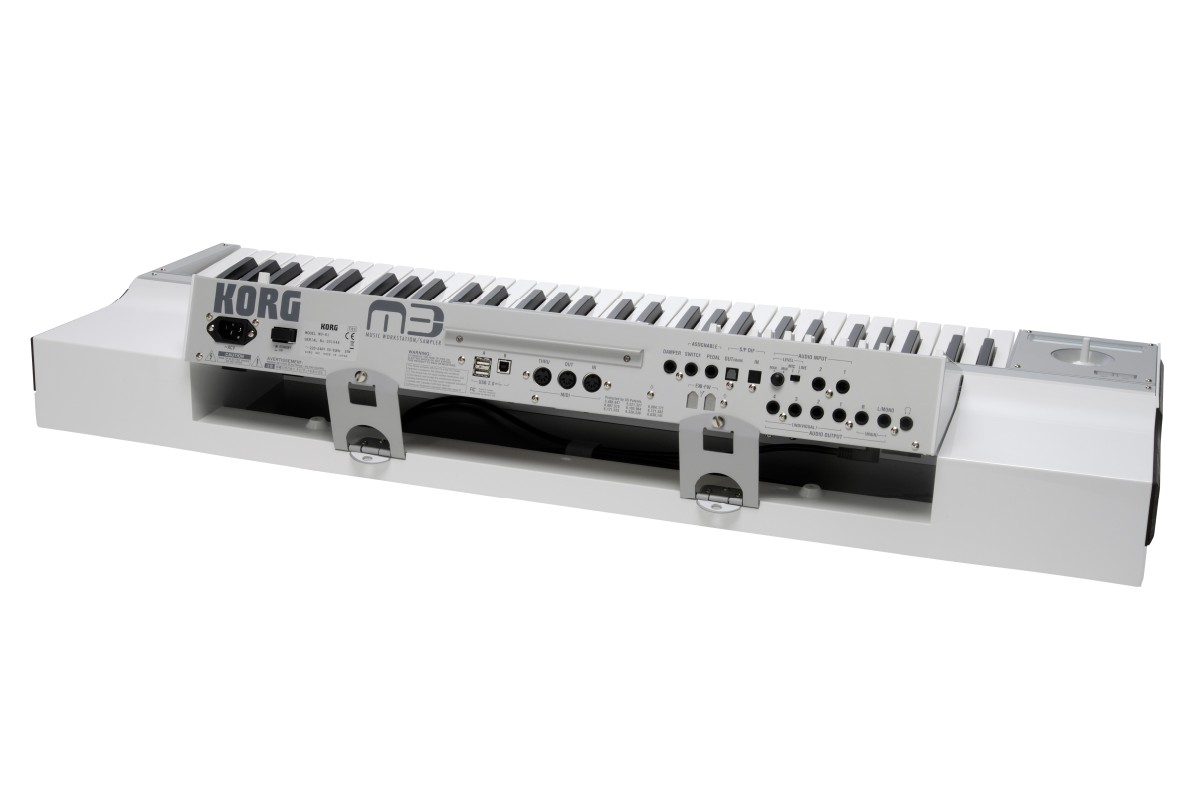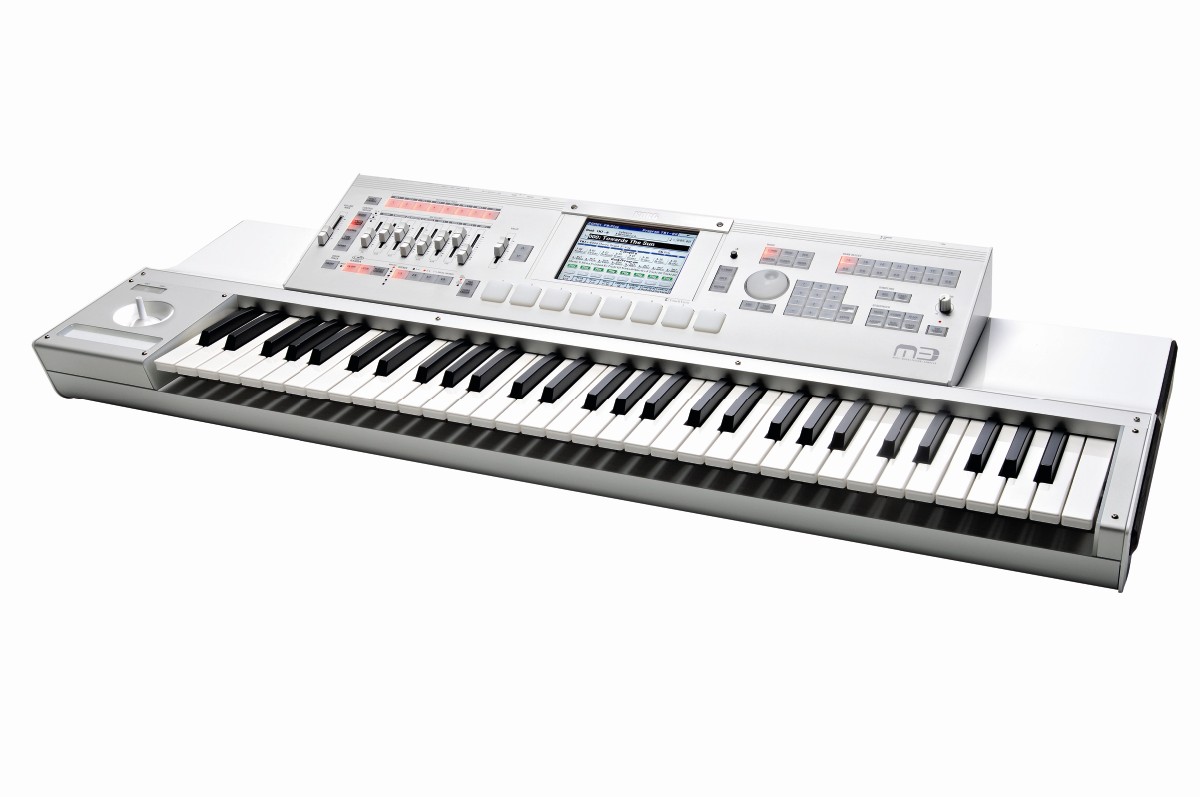MusicRadar Verdict
An absolute powerhouse. Inspiring, jaw-dropping and, above all, utterly capable.
Pros
- +
Excellent range of quality sounds.
Cons
- -
None.
MusicRadar's got your back



Were there to be a synthesizer hall of fame, Korg´s M1 (first released in 1988) would fully warrant its place therein. Coupling a phenomenal sound set with a powerful sequencer, it represented the cutting edge of technology at the time and was the instrument that introduced us to the wonders of the 'workstation'.
The M1 went on to shift more units than any other model in workstation history and Korg, knowing they were on to a good thing, slowly expanded their output to accommodate more powerful models in the T and 01/W ranges.
However, alongside the do-it-all-in-one-box products, Korg were also busy developing other technologies throughout the ´90s and early naughties, including physical modelling, the expansive OASYS system, Wavestation vector technology, the Karma system and, of course, effects processing, Kaoss-style. A lot of water has passed under the bridge since the M1 arrived, not just for Korg but for the industry at large and the workstation concept has, for many of us, been assimilated into a DAW and studio set-up. But there are plenty of signs that not everyone wants to go that route and with such a range of technologies at Korg´s fingertips, they seem better primed than anyone else to relaunch the workstation concept.
In summary, this is a synthesizer, sampler, effects processor and sequencer, with the additional benefit of a range of real-time performance controllers. On top of that, USB connectivity is provided to allow the M3 to fit seamlessly into a computer-based set-up, or to link directly to USB storage devices.
Versions
The M3 is available in four versions, with 61 and 73-key semi-weighted keyboard versions, an 88-key weighted version and the M3M module. Like the Radias, the keyboard versions allow you to tilt the central 'business' section forwards to improve the viewing angle and the central LCD pane uses Korg´s TouchView technology for direct parameter tweaking. The finish is a contemporary white and from the off, everything about this workstation screams class.
The sonic backbone of the M3 is taken from Korg´s flagship OASYS technology. The HD-1 sound engine behind OASYS has been streamlined into a new chip at the heart of the M3, which Korg call Enhanced Definition Synthesis (EDS).
This drives the synthesis possibilities, which allow you to construct programs from the onboard 256MB of PCM material, which is broken down into over 1,000 multi-samples and 1,600-odd drum samples. Alongside this, if you´re more interested in making synthesized sounds from scratch, you´ve got Korg´s dual-oscillators that can feed two filters per oscillator, before reaching the envelopes and effects.
As you might expect, this all adds up to an enormously rich sound. The M3 simply sparkles, whether you´re interested in acoustic instrument simulation, synthesized loops and phrases, or unusual soundscapes and motion sequences. In Combi mode, programs you´ve lovingly constructed can be layered, zone-mapped to specific keyboard areas and further processed, so that entire performances can be triggered from the keyboard. Check out the DVD for some examples - none of which have been sequenced at all but simply produced by playing Combis.
The eight velocity-sensitive pads below the touchscreen can also be used for performance, as you can assign sounds and loops from the loaded Combi to any of the pads. In this way, you can trigger chords from a single pad press, while jamming a keyboard solo on top. It´s fair to say that the M3 is a keyboard player´s dream. The sound and ease of performance, despite such a dizzying array of sonic options, means that this instrument is sure to capture the hearts of many a session player both for the studio and the stage. You just can´t keep your hands off it.
Movement
And while we´re talking about hands-on features, the M3 rewards anyone with a propensity for flamboyance in their performance style. In the bottom left-hand corner, you´ll find the joystick and finger-strip controller. The latter of these can be assigned to control the parameters of your choice, so you can easily slide from mellow to mayhem within a single note. The joystick´s up and down controllers are assignable too, while left-right movement provides pitchbend.
Korg´s Karma technology is also built into the M3´s DNA and it proves a welcome and intuitive addition. For the uninitiated, Karma was developed as part of the OASYS system and effectively works as a powerful phrase generator to act as a part of any sound you´re working on.
Phrases can range from style-specific bass sequences to glissandi and instrument runs and it´s possible to route any sound to any Karma sequence, or indeed to make new sequences of your own. Rather brilliantly, Karma works by outputting not only MIDI notes, but also controllers too, so each phrase can actually be a series of events that you can route through to the parameters of your choice. But the control doesn´t end there.
A press of the X-Y button to the right of the TouchView and this becomes a virtual Kaoss Pad. The light show squares associated with Kaoss are replaced by the onscreen text becoming colour-tinted by your finger movements, but functionality is otherwise the same - you can warp a sound however you choose. Get ready to get lost in this function for hours.
Effects
All of which brings me neatly on to the M3´s effects section. In keeping with the other features, these are generous. Each program can be assigned up to five Insert effects, which in turn feed two Master effects modules, and there´s even an additional Total global effect.
In Combi mode, the same effects chains are available, but they´re shared between the Combi´s Programs. There are 170 effect types from which to choose, ranging from delays and reverbs through EQs to compressors and beyond. In all modes, a 3-band EQ is also available at the start of the plug-in chain.
It´s possible to access effects parameters from elsewhere in a Program´s content too, so you could, for example, route an LFO to control reverb amount. The effects are also made available to incoming audio sources you´re about to sample, or to sources already held in the M3 that you want to re-sample internally. In this way, you could take a dry snare drum hit and capture a number of processed versions, whose effects become a fixed part of each bounced file. It´s also possible to use the M3 exclusively as an effects processor by feeding signals in via the audio inputs and routing them back out through any combination of the master or individual outs.
Sampling
Beyond flexible effects routing, the sampler also has some rather nifty tricks up its sleeve. The basic onboard RAM allows for only 64MB of samples (roughly five-and-a-half minutes of stereo) but you can expand this easily with USB storage devices, including memory sticks. Sampling Mode has a dedicated button and it´s very easy to audition, monitor and capture sound through the audio ins.
Before you do so, it´s advisable to set maps for sample material so that ranges and key assignments are made before you begin. That way, once the sampling has been done, you´re immediately ready to start playing. As far as recording goes, you can either use the M3´s auto set-up options, which handles levels for you, or take matters into your own hands, with the rear-mounted trim control and mic/ line selector knob.
Once your sound is captured, you can trim it, loop it, change its volume, or Time Slice it, whereby the M3 automatically detects slices in rhythmic material and chops these so they can be assigned to different keys or pads. All this frees up sample data from its original tempo without affecting pitch.
Heritage
As Korg have decided to prefix this workstation with an M, it´s impossible to ignore its heritage. The M1 remains the best-selling workstation ever made and only time will tell if this success will be eclipsed by the M3.
However, as the M3 combines features from so many Korg technologies and products from the past decade or so, this instrument represents a real chance for the folks at Korg to take stock, sit back and enjoy what they´ve achieved - which is certainly a great deal.
As far as features go, it´s extraordinary to discover how much has been squeezed into this instrument and it´s true to say that any M3 owner will still be finding out new things about it in years to come, as there´s so much beneath the surface. Prospective buyers will have their own priorities but as this machine does synthesis, sampling, sequencing and effects processing so comprehensively, it should fit the bill for anyone looking for any of those features in workstation form.
However, the inclusion of USB integration - as well as the FireWire option - means that the M3 is more than ready to fit into any set-up, whether it´s predominantly hardware or software based. And, like any proud father, the M1 can look at the M3 and feel rightly chuffed.
MusicRadar is the number 1 website for music makers of all kinds, be they guitarists, drummers, keyboard players, djs or producers...
GEAR: We help musicians find the best gear with top-ranking gear round-ups and high- quality, authoritative reviews by a wide team of highly experienced experts.
TIPS: We also provide tuition, from bite-sized tips to advanced work-outs and guidance from recognised musicians and stars.
STARS: We talk to musicians and stars about their creative processes, and the nuts and bolts of their gear and technique. We give fans an insight into the actual craft of music making that no other music website can.
YouTube just added AI tools that makes musicians, library music and video editors redundant
“Every one of them said yes without hesitation": Hank Marvin and Roger Taylor have just remade a '60s classic for charity
Do you know where your money goes when you buy a gig ticket? A new report breaks it down










